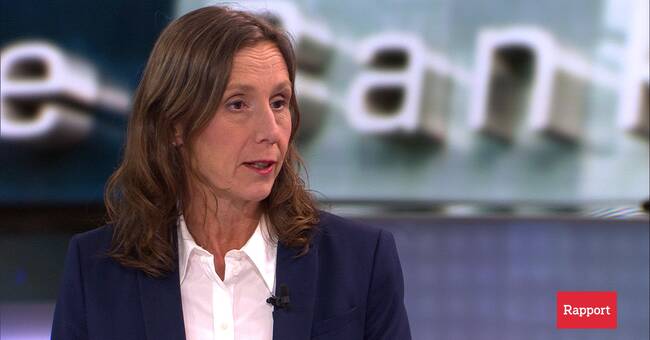Money in the bank.
This is the brief description of the financial situation in the bank reports for the first quarter.
And that's not so strange.
With the global financial crisis of 2008-2009 in mind, the central banks, including the Swedish Riksbank, launched the worst rescue operation.
It has become hundreds of billions of kronor in new money into the banking system in Sweden alone.
It helped, beyond expectation.
The financial crisis came this time.
Took in more than they needed
The loan losses for the four major banks in the first quarter were SEK 900 million.
In total.
It can be compared with operating profits - 30 billion.
Last year, they admittedly reserved more for credit losses, a total of almost SEK 20 billion.
But some of the banks have taken in more than they should have - there are rules for how to value credit losses, but it is also to some extent an assessment sport.
And a lot of the credit losses are not really even related to the corona crisis, but to the fact that the price of oil fell.
And above all: compared to the financial crisis, where a single disaster bank, Swedbank, managed to perform credit losses of SEK 28 billion, there is hardly anything to talk about.
The 50 billion that the shareholders lost at the general meetings last year thus remains with the bank.
Swedbank has already had time for an extra dividend.
As soon as the authorities allow it, most of the major banks' intended dividends last year will return to shareholders.
Three out of four increase profits
Meanwhile, it rolls on almost as if nothing has happened.
Three out of four banks have increased profits so far this year compared to the first quarter last year, when the pandemic broke out.
Nordea even increased its net interest income.
It is in itself difficult now that all the rescue money has pushed down interest rates.
The banks are thus hoping for slightly rising interest rates.
For SEB, revenues would increase by one billion if the Riksbank raised the repo rate by a quarter of a percent.
Which it did not say it would do for the next three years.
But if the banks are struggling to make money on bank accounts and loans, they have free profits from the low interest rates elsewhere.
The stock market rush over the past year has made fund savers rich, but also the banks, as the fund assets on which they charge fees to customers have increased.
Shareholders can count on dividends
The four major banks now manage a total of more than SEK 8,000 billion - this corresponds to roughly the total GDP of Sweden and Finland in total.
The increase in assets under management alone last year was SEK 1,700 billion.
So much more they can charge fees.
So the banks are flooded with money, you could say.
As soon as Finansinspektionen and the European Central Bank blow over the danger and say ok to share dividends, shareholders can therefore expect a dividend.
If they do not lose enough money through dividends, they flag for share repurchases.
All to "normalize the capital structure" as the SEB CEO put it.
What it's about is that there is an unnecessary amount of money in the bank given the risks.
And if you lose some of the money, there will be better profitability figures on the money left in the bank.
Then, of course, it applies that the "crisis" persists and there will not be a new financial crisis in the future as a result of all the corona rescue money.

